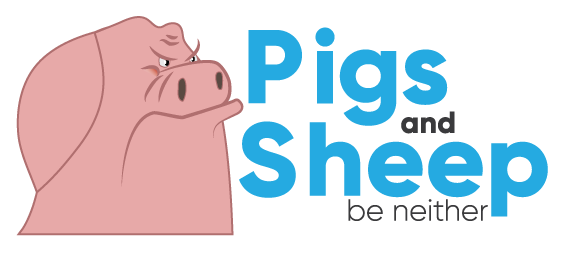Most gun rights advocates know that it’s illegal for civilians to own machine guns. While not entirely true (with a special permit, in certain states, one CAN own a fully automatic rifle manufactured before 1986), it’s close enough to true for practical purposes. Very few gun rights advocates will argue for the lifting of that ban, and are instead content to pursue robust rights protections for semi-automatic and single-action rifles and pistols.
I suspect, however, that far fewer gun rights advocates know the origins of the automatic weapons ban. Some may correctly identify the year of the ban as 1934, some may know the legislation was called the National Firearms Act (NFA), some may know the ban also included silencers and short barrel rifles and shotguns. How many know, though, that the NFA came about as a response to gang violence of the 20s? The image of Al Capone-type mobsters in suits, fedoras and Tommy guns is commonly known thanks to such atrocities as the Saint Valentine’s Day Massacre in 1929, and to period mobster movies and television shows such as The Untouchables.
That mob violence itself was the product of Prohibition, that “Great Experiment” that banned alcohol from 1920 to 1933. While organized crime existed prior to Prohibition, it grew tremendously after decades of the puritanical “dry”/temperance movement finally succeeded in its efforts to tell people what they should not put in their bodies.
With the exception of laws and court rulings that specifically limited the gun rights of blacks, the NFA was the first piece of legislation in the country’s history that infringed on citizens’ gun rights. It can be traced directly to another infringement on individual rights – the right to consume that which we wish to.
Fast forward to the 1960s. Urban unrest, particularly the Watts riots in 1965 and some sniping incidents against police in Los Angeles around that time led to the formation of the first SWAT teams in 1968. Once past the riots, the role of SWAT teams shifted to the drug war. As reported in the press and glamorized by the entertainment industry over the decades, forming and deploying SWAT teams is a logical and necessary response to the reportedly well-armed drug gangs that police were facing. The outgunned street cops has been a common Hollywood trope since the 1970s, and it’s the go-to argument for every militarization defender and apologist.
Those well-armed drug gangs didn’t materialize out of nothingness, of course. Just as alcohol prohibition made trafficking of illegal liquor profitable, drug prohibition has created an enormous illegal industry, where players don’t have recourse in the courts and thus turn to armed violence to adjudicate their disputes and resist law enforcement. Government, not content with militarizing police forces in order to better prosecute the drug war, has enacted further restrictions on the gun rights of citizens. Perhaps not coincidentally, the first major gun rights restrictions imposed since the 1930s and the National Firearms Act were enacted in 1968. The War on Drugs was formally declared in 1971, and the Bureau of Alcohol, Tobacco and Firearms was formed in 1972. The ban on machine guns and armor piercing ammunition was enacted in 1986, the Gun-Free School Zones Act was passed in 1990, the National Instant Criminal Background Check system was set up in 1993, and the “Assault Weapons Ban” was enacted in 1994 (it sunsetted in 2004).
Today, “assault weapons” are the great big bogeyman of the anti-gun crowd, and going by personal experience, many in that crowd have drawn their “knowledge” of what an “assault weapon” is from popular culture depictions of drug gangs and cartels. What might be the history of gun control and the current state of gun rights if drugs were never criminalized or if the War on Drugs was never declared? Would the aversion that some hold to modern sporting rifles (aka those scary black guns that look like military rifles) exist?
The strongest advocacy for gun rights tends to be found in “flyover country,” that is, the American heartland. With the exception of the pocket of liberalism radiating outward from Chicago, heavy restrictions on gun rights are primarily found in the Northeast and California, and the large majority of heartland states have strongly pro-gun laws. Perhaps not coincidentally, the regions of the nation with the strongest religiosity include a good bit of “flyover country,” in particular the Bible-Belt South.
The temperance movement originated in the Protestant churches during the mid 1800s, and even today there are numerous “dry” counties and municipalities in the US, concentrated in the Bible Belt. Drug prohibition’s early days included efforts by English Quakers to suppress the opium trade, Protestant missionaries seeking abolition of opium in China, and while the origins of the Harrison Act enacted by the US in 1914 are awash in racist hysteria, the persistence of drug prohibition today is certainly linked with religiosity and puritanical attitudes towards pleasure.
The irony should be obvious. The roots of gun rights infringement – alcohol and drug prohibition – are themselves rooted in the beliefs of those who are arguing against gun rights infringement. Perhaps respecting others’ rights to self-determination when it comes to “sins” might work better for defending the rights that they hold important.

Active Comment Threads
Most Commented Posts
Universal Background Checks – A Back Door to Universal Registration
COVID Mask Follies
When Everything Is Illegal…
An Anti-Vax Inflection Point?
“Not In My Name”
The Great Social Media Crackup
War Comes Through The Overton Window
The First Rule of Italian Driving
Most Active Commenters